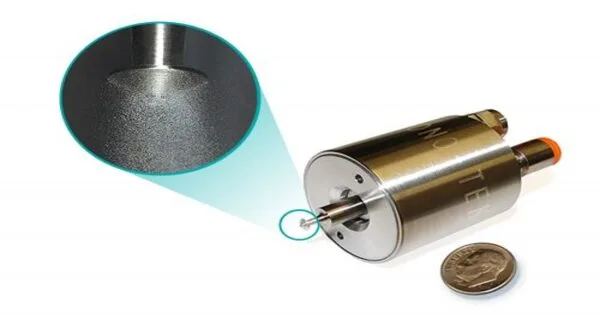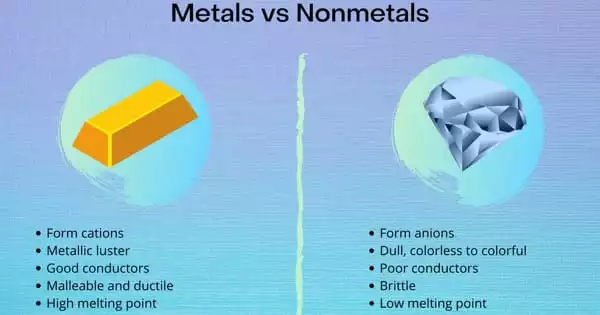An ultrasonic nozzle is a device that uses ultrasonic vibrations to create a thin mist or spray of liquids. These are spray nozzles that use high-frequency vibrations caused by piezoelectric transducers working on the nozzle tip to generate capillary waves in a liquid layer. These nozzles are widely employed in a variety of industrial and scientific applications that require precise control over droplet size.
When the amplitude of the capillary waves reaches a threshold height (due to the generator’s power level), they are unable to support themselves, and tiny droplets fall off the tip of each wave, resulting in atomization. An ultrasonic nozzle relies on a piezoelectric transducer, which transforms electrical energy into mechanical vibrations and is commonly built of lead zirconate titanate (PZT).
The initial droplet size formed is primarily influenced by the frequency of vibration, surface tension, and liquid viscosity. Frequencies are typically between 20 to 180 kHz, which is beyond the range of human hearing, with the highest frequencies producing the lowest drop size.
Here’s a basic explanation of how an ultrasonic nozzle works:
- Piezoelectric Transducer: The heart of the ultrasonic nozzle is the piezoelectric transducer. When an electrical voltage is applied to the transducer, it causes it to vibrate at an ultrasonic frequency (typically in the range of 20 kHz to several hundred kHz).
- Liquid Reservoir: The liquid to be sprayed is contained in a reservoir connected to the nozzle.
- Vibration Transmission: The ultrasonic vibrations generated by the transducer are transmitted to the liquid in the reservoir.
- Liquid Disintegration: The high-frequency vibrations create standing waves on the liquid’s surface, leading to the formation of tiny droplets. The liquid is disintegrated into a fine mist as a result of the ultrasonic energy.
- Spray Formation: The fine mist is expelled from the nozzle in the form of a controlled spray. The size of the droplets can be adjusted by varying the frequency of the ultrasonic vibrations.
Ultrasonic nozzles are commonly used in applications such as:
- Spray Coating: Precision coating of surfaces with paints, coatings, or other liquids.
- Fuel Atomization: In fuel injection systems to create a finely atomized spray for combustion.
- Humidification: Generating a fine mist for humidifying air in controlled environments.
- Medical and Pharmaceutical: Precision dispensing of pharmaceuticals or medical solutions.
The advantages of ultrasonic nozzles include precise control over droplet size, reduced overspray, and the ability to work with a wide range of liquids. They are particularly useful in applications where a uniform and controlled spray is critical.
















